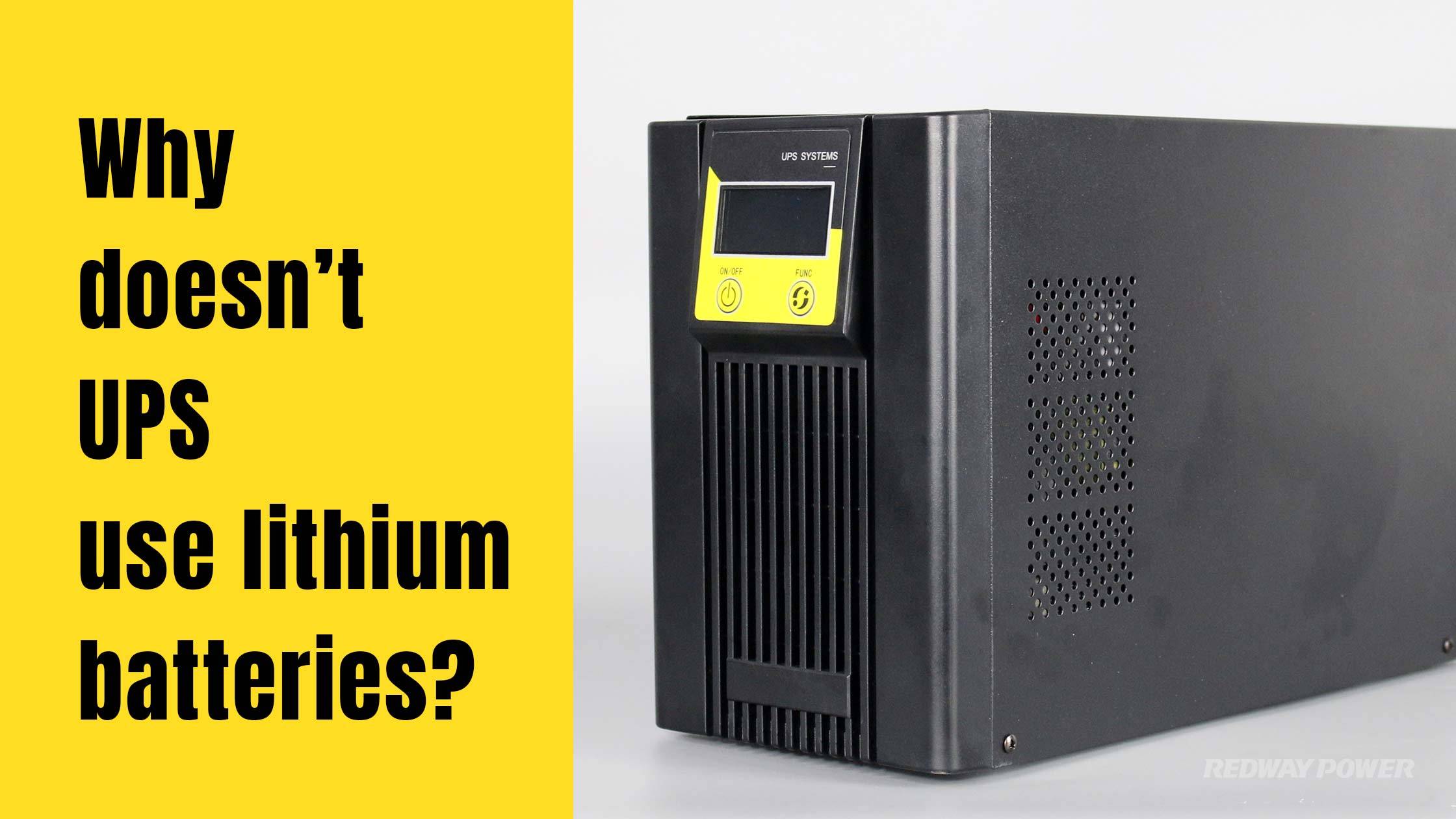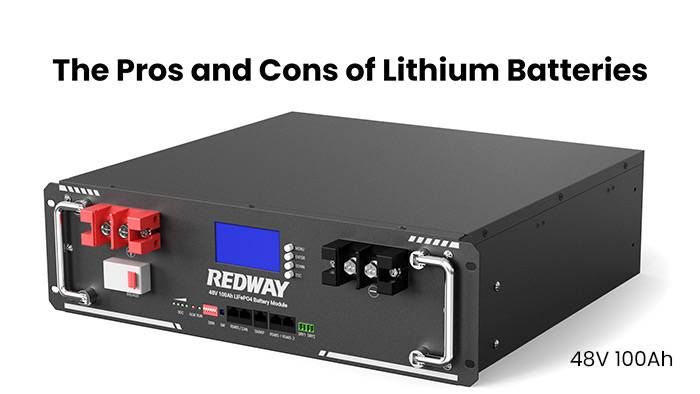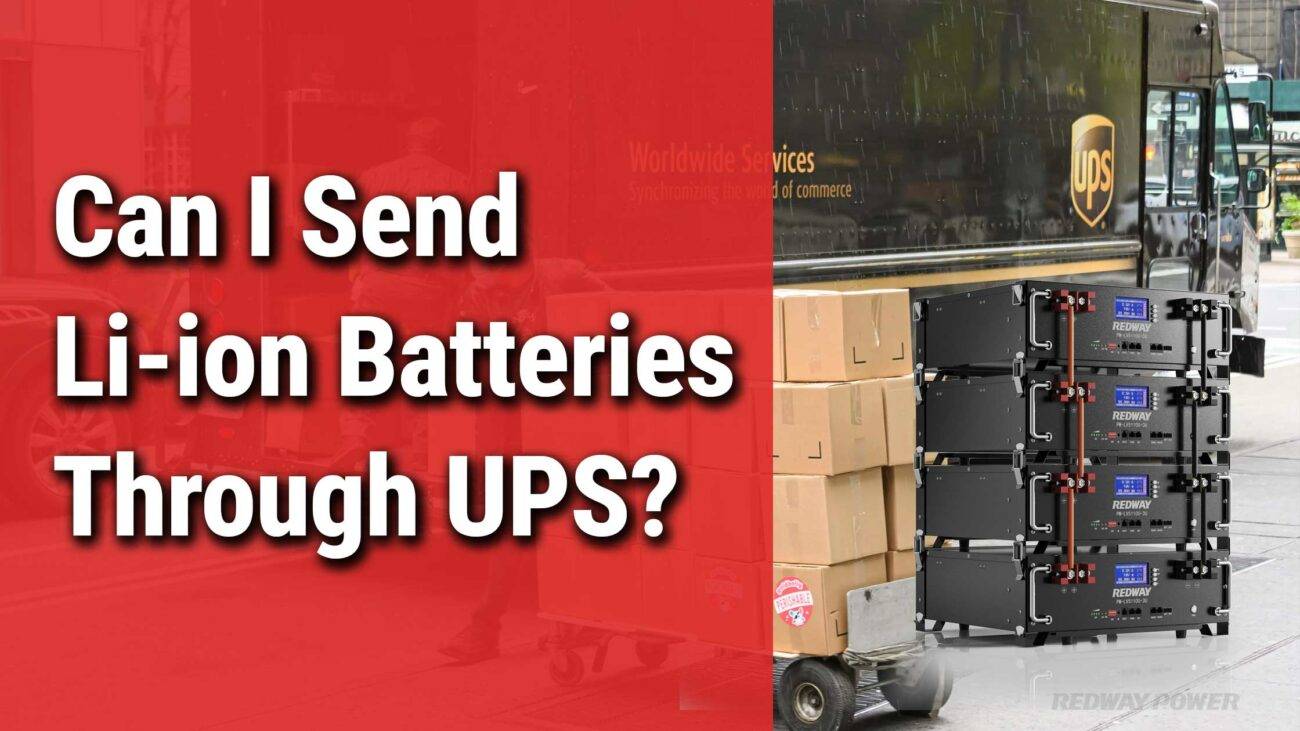- Forklift Lithium Battery
- Golf Cart Lithium Battery
- Rack-mounted Lithium Battery
51.2V 100Ah Rackmount LiFePO4 Battery
8000 times (80% DOD 0.5C)
Optional SNMP for TELECOM - Car Starter Battery
- 12V LiFePO4 Battery
12V 150Ah Lithium RV Battery
Bluetooth App | Self-heating
LiFePO4 | Group 31
UL 1642 | IEC 62619 - 24V LiFePO4 Battery
- 36V LiFePO4 Battery
- 48V LiFePO4 Battery
- 60V LiFePO4 Battery
60V 100Ah Lithium Battery (AGV, AMR, LGV)
Peak Discharge Current 400A
500 x 298 x 349 mm - 72V~96V LiFePO4 Battery
72V 100Ah Lithium Golf Cart Battery
Peak Discharge Current 315A (10S)
740 × 320 × 246 mm - Wall-mounted Lithium Battery
51.2V 100Ah 5kWh
Wall-mounted Battery532 x 425 x 170 mm / LiFePO4
>8000 Cycles (80% DOD 0.5C)
RS485 / CAN-bus
for Solar Home ESS - Home-ESS All-in-One
51.2V 32kWh
All-in-On HESS SystemPowerAll
51.2V / LiFePO4
>8000 Cycles (80% DOD 0.5C)
RS485 / CAN-bus / WiFi
All-in-One for Home ESS
Why Doesn’t UPS Use Lithium Batteries?

UPS does utilize lithium batteries for certain applications, but there are significant challenges and regulations associated with their use. These factors include safety concerns, regulatory compliance, and cost implications. Understanding these issues can help clarify why UPS may not prioritize lithium batteries as much as other types.
What are the regulations for shipping lithium batteries through UPS?
UPS follows stringent regulations set by various governing bodies, including the International Air Transport Association (IATA) and the U.S. Department of Transportation (DOT). These regulations classify lithium batteries as hazardous materials due to their potential fire risk. Shipments must comply with specific packaging, labeling, and documentation requirements to ensure safe transport.Chart: Overview of Shipping Regulations
| Regulation Type | Description |
|---|---|
| UN3480 | Lithium ion batteries packed alone |
| UN3090 | Lithium metal batteries packed alone |
| Dangerous Goods Contract | Required for certain shipments |
Why are lithium batteries considered hazardous materials?
Lithium batteries are classified as hazardous materials primarily due to their flammability and risk of thermal runaway. If damaged or improperly handled, they can overheat, catch fire, or even explode. This inherent risk necessitates strict handling and shipping protocols.Chart: Reasons for Hazard Classification
| Hazard Type | Description |
|---|---|
| Flammability | Risk of fire if damaged |
| Thermal Runaway | Overheating can lead to explosions |
| Regulatory Compliance | Requires adherence to safety regulations |
What challenges does UPS face with lithium batteries?
UPS encounters several challenges when dealing with lithium batteries:
- Safety Risks: The potential for fires during transit requires stringent safety measures.
- Complex Regulations: Navigating various international shipping laws can be complicated.
- Cost Implications: The need for specialized packaging and handling increases operational costs.
How does UPS ensure safety when handling batteries?
UPS implements multiple safety measures when handling lithium batteries, including:
- Training Employees: Staff are trained on proper handling and emergency procedures.
- Specialized Packaging: Use of appropriate packaging materials that comply with regulations.
- Regular Inspections: Ongoing inspections of battery shipments to identify potential hazards.
Chart: Safety Measures Overview
| Measure | Description |
|---|---|
| Employee Training | Ensures staff understand risks and procedures |
| Specialized Packaging | Complies with safety regulations |
| Regular Inspections | Identifies hazards before transport |
What are the benefits of lithium-ion batteries in UPS systems?
Lithium-ion batteries offer several advantages over traditional lead-acid options:
- Longer Lifespan: Typically last longer (10-15 years) compared to lead-acid (5-7 years).
- Higher Energy Density: Provide more power in a smaller footprint.
- Less Maintenance: Require minimal maintenance compared to lead-acid counterparts.
Why do some companies hesitate to use lithium batteries?
Despite their advantages, some companies remain hesitant due to:
- Higher Initial Costs: The upfront investment for lithium-ion systems is significantly higher than lead-acid.
- Perceived Safety Risks: Concerns about potential fire hazards can deter adoption.
- Lack of Familiarity: Companies may prefer traditional technologies they understand well.
How do cost and safety concerns influence battery choices?
Cost and safety are critical factors influencing battery selection:
- Initial Investment vs. Long-Term Savings: While lithium-ion offers lower total cost of ownership over time, the initial purchase price can be a barrier.
- Operational Safety: Companies prioritize safe operations; any perceived risk can sway decisions toward safer alternatives like lead-acid.
Chart: Cost vs. Safety Considerations
| Factor | Lithium-Ion | Lead-Acid |
|---|---|---|
| Initial Cost | Higher | Lower |
| Lifespan | Longer (10-15 years) | Shorter (5-7 years) |
| Maintenance | Minimal | Moderate |
| Safety | Higher perceived risks | Established safety record |
What alternatives to lithium batteries are commonly used?
Common alternatives include:
- Lead-Acid Batteries: Widely used due to lower costs and established technology.
- Nickel-Cadmium (NiCd): Used in specific applications requiring high discharge rates but less common in general use today.
- Nickel-Metal Hydride (NiMH): Occasionally used but typically not favored for large-scale applications.
What are the key issues with lithium battery technology?
Key issues include:
- Cost Variability: Prices can fluctuate based on raw material availability.
- Thermal Management Challenges: Ensuring safe operation under varying conditions is crucial.
- Recycling Concerns: Developing effective recycling methods remains a challenge.
How do lithium batteries compare to lead-acid batteries?
Lithium and lead-acid batteries differ significantly in several aspects:
- Weight and Size: Lithium is lighter and more compact than lead-acid.
- Performance: Lithium offers better performance at low temperatures and higher discharge rates.
- Cycle Life: Lithium typically has a longer cycle life compared to lead-acid.
Chart: Comparison Overview
| Feature | Lithium-Ion | Lead-Acid |
|---|---|---|
| Weight | Lighter | Heavier |
| Size | More compact | Bulkier |
| Performance | Better at low temps | Limited performance in cold |
| Cycle Life | 10-15 years | 5-7 years |
Why is there resistance to transitioning to lithium solutions?
Resistance stems from several factors:
- Established Practices: Many companies have long relied on lead-acid technology.
- Training Needs: Transitioning requires employee training on new technologies.
- Investment Hesitancy: Companies may be reluctant to invest in new systems without clear ROI.
What innovations are emerging in battery technology?
Recent innovations include:
- Improved Thermal Management Systems: Enhancements that mitigate overheating risks.
- Advanced BMS Technologies: Better monitoring systems that optimize performance and safety.
- Cost Reductions in Manufacturing: Efforts aimed at lowering production costs for lithium technologies.
Industrial News
The landscape for battery technology continues to evolve rapidly, particularly regarding lithium-ion solutions for uninterruptible power supplies (UPS). Recent reports highlight a growing trend among data centers and commercial facilities to adopt these technologies due to their efficiency, longevity, and reduced space requirements compared to traditional lead-acid systems, despite ongoing concerns about cost and safety.
Redway Power Insights
“Transitioning from traditional lead-acid systems to lithium-ion technology presents both challenges and opportunities,” states an industry expert. “While initial costs may be higher, the long-term benefits such as reduced maintenance and longer lifespan make it a worthwhile investment for many businesses.”

FAQs
Does it cost more to ship Li-Ion batteries?
Can you send Li-Ion battery by courier?

















